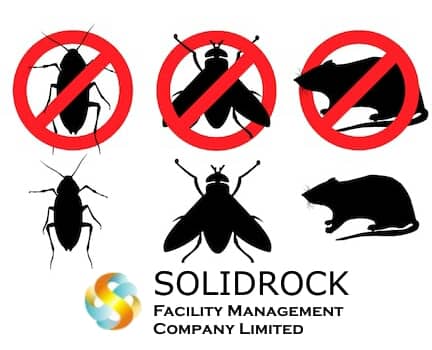Preventing A Surge Of Pests For Commercial Properties
How and why does pest activity surge in hot weather, spring and summer? More crucially, how can commercial buildings safeguard themselves against pest damage?
Across the country, rising temperatures and changing weather patterns are driving increased pest activity in and around commercial properties. As property owners and facility managers prepare for the season ahead, ants, rodents, stinging insects, and flies emerge in search of food, moisture, and shelter, which presents a problem for commercial properties.
Why does pest activity surge in hot weather, spring and summer ? Pest pressures rise as temperatures increase for several reasons, including:
1 Warming Temperatures: Many pests become active after months of winter dormancy, kicking off their search for fresh food, shelter, and mates.
Increased Moisture: Spring rains and melting snow create the ideal environment for pests that thrive in damp conditions.
2 Mating Cycles: This season marks the beginning of peak reproduction for many insect species, leading to rapid population growth.
3 Longer Days: More daylight hours mean more time for daytime pests to forage, reproduce, and invade businesses and properties.
Ultimately, getting ahead of seasonal trends can help protect commercial facilities before threats escalate.
Structural Damage: Rodents can chew through wiring, insulation, and even building materials, leading to costly repairs and potential safety hazards. The National Fire Protection Association estimates that rodents are responsible for 20-25% of fires with unknown causes.
Health Hazards: Pests can carry a variety of diseases and contaminate stored items with droppings and urine, posing health risks to employees and customers.
Economic Impact: Many facilities suffer from lost revenue from property damage, product damage, or hits to their service reputation because of sightings.
Damage to Property: Rodents will gnaw and chew through cardboard, fabric, and even plastic, damaging many goods. Tenants may demand compensation for damaged goods, adding to the unintended financial consequences of having pests.
Attract Other Pests: Once pests gain access to a facility, they can attract other pests and spread to adjacent businesses, requiring more extensive—and costly—solutions to remove them.
How To Prevent Pest Problems
There are proactive steps property owners and facility managers can take to ensure their facilities are clean, will attract less pests, and their commercial spaces will be protected when hot weather, spring and summer arrives.
1 Schedule a Check-Up : Schedule time with a pest management provider to conduct a thorough interior and exterior inspection. A provider should be looking for signs of pest activity as well as identifying deficiencies in the structural, cultural, or cleaning protocols that may have developed. Identify items needing corrective action and document what was done to fix any issues.
Exclusion: Make sure all potential pest entry points are sealed, including gaps around doors, windows, vents, and utility penetrations. Install door sweeps, weatherstripping, and caulking to close any openings. And remember, no hole is too small for a pest to sneak through, openings as small as a dime are wide enough for a mouse to fit through.
2 Keep Exterior Doors Closed: The number one way pests gain access to commercial properties is through open exterior doors. Reinforce with employees to not leave doors open or consider a screen door.
3 Maintenance and Lighting: Stay on top of maintenance issues such as improperly fitting doors or leaky faucets that would provide pests access to food, water, or shelter.
4 Maintain Landscaping: Reduce pest harborage areas on the exterior of buildings by keeping grass cut and shrubs and trees trimmed. Avoid putting mulch next to buildings and instead use a 12″ barrier of stones or cement.
5 Eliminate Moisture Sources: Eliminate moisture sources that leave standing water adjacent to structures. Slope the ground away from the foundation for proper drainage and install gutters and downspouts to push water away from the building. Make sure to keep the gutters clear of debris to avoid moisture backup that can attract pests. Repair leaky faucets and sprinkler systems to eliminate excess moisture.
6 Stay on Top of Sanitation and Cleaning Protocols: Spring cleaning is not just a home maintenance task; it is also a good time to do a thorough cleaning of a facility. Review sanitation and cleaning protocols to make sure they meet the needs of the commercial facility. Remove clutter in storage areas on both the interior and exterior. Don’t forget to clean employee bathrooms, break rooms, and locker room areas.
Education: Spring is also a good time to re-educate employees on the importance of proper food storage, cleaning, and methods to reduce clutter.
7 Consistent maintenance, cleaning, and education help prevent small pest issues from becoming larger and more costly infestations.
How To Work With A Pest Control Professional
It’s important for a facility to select a pest control company with experience and a proven track record of success with pest management and mitigation. Ask what type of reporting tools they use to share information about a program and how the information can be accessed. Electronic documentation of service reports, sighting logs, maintenance requests, and other materials are preferred since they often offer real-time information.
Facilities teams should ask about a partner’s service response time, and ensure a pest control contract includes pricing, service frequency, key contact information, and what services are covered in the agreement.
Key Takeaways
When fortifying a building against rising pest pressure, remember that there is no one cure to preventing pests. Effective pest management is a shared partnership between property owners, facility managers, and pest management professionals.
Collaborating with maintenance teams and key vendors, such as landscapers, cleaning services, and food service providers, is also essential for identifying and addressing potential pest vulnerabilities. Contracting for regular, year-round pest control services from a licensed professional is always less expensive and causes fewer headaches in the long run than reacting to pest issues on a case-by-case basis.
By taking a proactive approach to pest control and reducing risk factors, facilities teams can create a healthier, pest-free environment for tenants, employees, and visitors.


